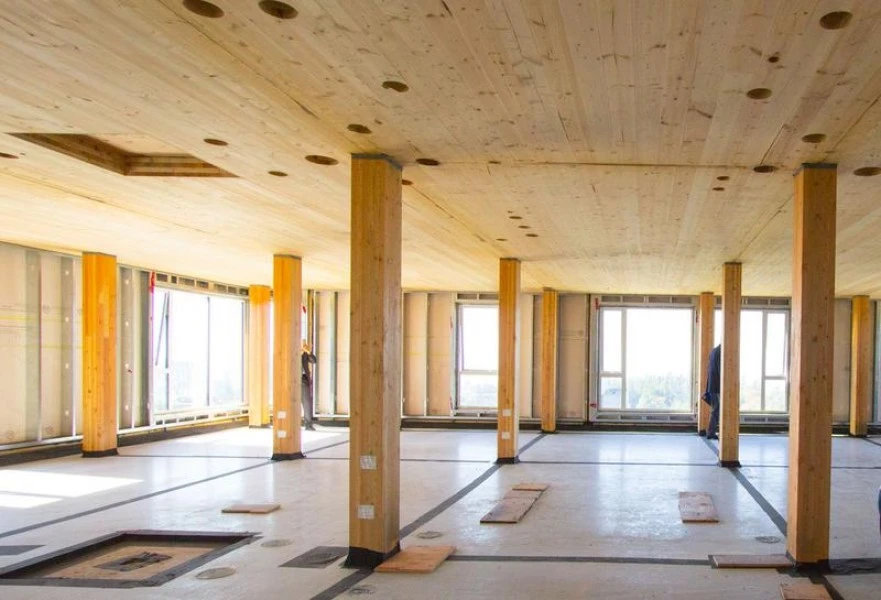Wood is not uncommon in modern architecture, with UBC's campus being an excellent example. However, in most cases, its usage rarely exceeds a stylistic choice, with concrete still making up the skeleton or the structure.
Russel Acton, one of the two principals at Acton Ostry, explained that the wood building is environmentally conscious, more sustainable and produces less waste (Link) that other building materials. It is also more fireproof that you might think.
“Have you been up through forest fire country after a forest fire has been through? So you see all these trees? They’re standing and haven't fallen down,” said Acton.
He explained that fire will burn through the first layers of wood and then stop. “The reason why it stops is that in the depth of that charcoal layer, oxygen can’t get into the wood to keep the combustion process going.”
Acton said that is why you have to prod a piece of firewood to get it to burn completely. Trees use this property to protect themselves from forest fires. Sequoias can survive wildfires due to a thick bark coat that won't burn completely. The tree is damaged in the fire, but survives and can continue growing because the tree's innards are unaffected.
Mass timber, like the wood used in Brock Commons, burns at a rate of 0.6 to 0.7 millimetres a minute. The thicker a piece of timber is, the longer it takes to burn. As long as the timber is thick enough, people will have more than enough time to leave the building if it does catch fire.
Brock Commons has a fire rating — the amount of time a building is supposed to withstand a fire before its structural integrity is compromised — that is about two hours, which is typical for a high-rise building.
Similarly, a wood building constructed from cross laminated timber floor panels and Glulam — glue laminated timber — pillars offers remarkably sound structural integrity, even after damage from a fire. When put under stress tests early in development, the wooden components were reported to have surpassed their expected breaking points, providing further evidence for its viability as a common building material, according to Acton.
To further fireproof the building, and keep the ascetic look of the timber all the wood can be coated with a clear fire retardant coating to stop the spread of flame. Passive Fire Products has specialised in the specification and application methods for Glulam projects. Contact us Today to see how our range of coatings can increase the fire protection of wooden structures.





